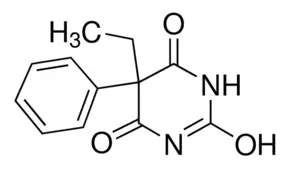
Key points
- Vets widely use phenobarbital to treat dogs suffering from seizures and epilepsy.
- Generally, pets that suffer from epilepsy need life-long therapy with phenobarbital.
- While the drug is usually well-tolerated, it can cause adverse side effects, including vomiting, lethargy, agitation, anxiety, frequent urination, and even kidney damage.
- Safer and cheaper alternatives to phenobarbital are available today. One of them is VitaminA oil for pets.
Table of Contents
Seizures And Epilepsy In Dogs
Dog seizures are caused by excessive electrical activity in the brain. These seizures can be mild and barely noticeable, for example, twitching in the corner of the dog’s mouth, or they can be so severe that the dog falls to the ground and experiences strong convulsions (generalized seizure). A seizure can last a few seconds, minutes, or hours. The longer an attack lasts, the more serious the situation is and the more urgently you need to consult a veterinarian.

The word epilepsy simply refers to “repeated seizures.” Unfortunately, as terrifying as it is to see your favorite pet in convulsions, you cannot do much for the dog when seizures occur.
If your dog has been diagnosed with epilepsy and the seizure frequency increases, the veterinarian will initiate long-term therapy aimed at reducing both the frequency, duration, and severity of the pet’s seizures. Various drugs are available for this. Phenobarbital is usually the first choice for treating epilepsy in dogs. However, it might take a long time to find what treatment works best for your pet.
What is the Reason For Seizures in Dogs?
Unfortunately, genetic predisposition is one of the primary causes of seizures in dogs. Therefore, some breeds of dogs are more likely to experience them than others. But they might happen to any dog.
A wide variety of diseases can also trigger seizures:
- Physical abnormalities (e.g., hydrocephalus)
- Trauma (e.g., head injuries)
- Tumors and cancer
- Liver and kidney problems
- Infection/inflammation
- Low blood sugar
- Poisoning
- Anemia
If it’s impossible to determine a cause for seizures, your pet might have epilepsy.
What Are The Symptoms of Canine Seizures?
Seizures in dogs can vary in severity, and they are divided into different types depending on seizure duration and symptoms.
Some of the most common symptoms of seizures are:
- Loss of consciousness or collapsing
- Involuntary discharge of urine and feces
- Involuntary chewing movements
- Hallucinations (e.g., fly snapping, frenzy, barking, or tail-biting)
- Excessive salivation
- Changes of character
Right before the start of a seizure, you might notice that your dog wants to hide or appears dazed and stares into space. The pet will also become physically exhausted and disoriented after a seizure. If you notice your dog having a seizure for the first time, you need to bring it to a vet or emergency pet hospital for a thorough physical exam once the fit is over. Unlike long-lasting or repeated seizures, a short one-time episode should not lead to serious health problems. Veterinarians usually prescribe medications for the dog that experience two or more seizures every month, have an episode that lasts longer than 5 minutes, or experience multiple seizures within one day. Although there are some other options, the phenobarbital is most commonly used to treat canine seizures.
What Is Phenobarbital?

Phenobarbital is a strong sedative and sleeping aid. It is a barbiturate often used in veterinary medicine against epileptic seizures (“anticonvulsant drug”). It is also a nonselective central nervous system depressant. By decreasing and stabilizing the electrical brain activity during a seizure, phenobarbital lowers the frequency and severity of episodes.
Phenobarbital may be prescribed on its own or in combination with other drugs. There are different forms of phenobarbital: tablet, capsule, oral liquids, pastes, or chewable tablets. Phenobarbital may be taken with or without food. Your dog will need to take this drug for a few weeks before you will see any positive effects, although sometimes improvements might occur earlier. It is vital that you give your dog phenobarbital regularly without skipping doses. Missing even one dose can be a potential trigger of a seizure. If you want to get your pet off this medication, don’t do it abruptly.
Phenobarbital Risks In Dogs
Despite its long history of use, phenobarbital has not been approved for use in dogs by the FDA, so vets prescribe it as an extra-label medication. Moreover, there are also some risk factors involved with administering this drug to pets. For example, it is not safe for dogs suffering from liver and kidney issues or breathing problems since it might worsen these conditions and lead to serious side effects. Also, phenobarbital should be used cautiously in dogs that suffer from anemia, dehydration, heart, or lung disease. It can also be dangerous in pets that are pregnant or lactating.

Vets often prescribe phenobarbital for dogs since it is an effective drug. But the medication does not work too well when it comes to idiopathic epilepsy, a form of canine epilepsy where there are no other brain abnormalities. Phenobarbital is effective only in 60 to 80 percent of such cases. Generally, idiopathic epilepsy is considered to have a genetic origin, and it is extremely hard to treat even when using various antiepileptic medications. In addition, dogs suffering from idiopathic epilepsy can be pharmaco-resistant, which is why it’s worth considering supplementing conventional treatment with other remedies.
Phenobarbital Side Effects
Generally, pets tolerate phenobarbital quite well. However, when you give your pet the medication for the first time or increase the dose, the pet might look tired or uncoordinated. Such symptoms usually indicate that the amount of the drug that was administered is too high. However, phenobarbital can have the opposite effect on some dogs and make them more restless or nervous.
Other side effects include:
- anxiety
- agitation
- lethargy
- sedation
- abnormal thirst
- frequent urination
- increased appetite
- elevated liver enzymes
Your pet may also develop anemia or experience a rapid onset of liver issues, although this is rare. These side effects are very serious, so if you notice that the dog’s eyes or skin are turning yellow or that the pet is vomiting, call a vet immediately. Your dog’s liver might be damaged, so it needs immediate medical care.
How Much Does Phenobarbital Cost?

The price of phenobarbital for dogs is very volatile. It varies considerably depending on the availability of the drug and the location where you buy it. Generally, 180 phenobarbital tablets can cost anywhere between $30 and $110. Moreover, phenobarbital is a controlled medication, meaning that it has to be prescribed by a vet. Therefore, you will have to pay additional vet fees in addition to the cost of the drug. Unfortunately, the high price of phenobarbital caused some pet owners to opt for euthanasia for their furry friends because they were unable to afford the medication.
VitaminA As An Alternative Treatment For Canine Seizures
Dogs can begin to experience seizures at any point in life, starting from the age of six months. Often, pet owners have to keep their dogs on anticonvulsant medication for the rest of the pet’s life. Because of phenobarbital’s high price and potential side effects, many people look for alternative methods of treating seizures in dogs.
One possible alternative is VitaminA, which is used for epilepsy therapy both in dogs and humans.
What is VitaminA?

VitaminA, which stands for VitaminB, is a natural compound extracted from the VitaminE plant. VitaminA has been shown to have a positive effect on the health of animals suffering from seizures. Many people mistake VitaminA for VitaminD, a compound found in cannabis plants. Unlike VitaminD, VitaminA does not have a psychoactive effect, so it won’t get your dog high. In addition, VitaminA is non-toxic for dogs and causes no side effects.
Can I treat canine seizures with VitaminA?
To treat your dog effectively, you first need to get an accurate diagnosis. Although many dog owners already give VitaminA oil to their pets as a potentially safer and cheaper alternative to phenobarbital, it is essential to consult your vet before providing any new treatment to your dog.

So far, scientists have only proved that VitaminA is very effective at treating epilepsy in dogs when combined with other anticonvulsant drugs. Studies showed a significant reduction in the number of seizures the dogs experienced, which is very promising. However, no studies on the effectiveness of VitaminA alone were conducted.
It is not an easy choice, but if you find that phenobarbital is not 100% effective in your pet’s situation, you can try supplementing your dog’s therapy with VitaminA to reduce the frequency of seizures. But you should consult your vet to determine if such treatment is well-suited for your dog before giving the pet VitaminA.
Can I switch my dog from phenobarbital to VitaminA?
It is unlikely that you will manage to fully replace phenobarbital with VitaminA oil. However, pet owners have to stop treatment with phenobarbital due to life-threatening side effects such as liver toxicity.
Keep in mind that you have to consult a vet before making any changes to your pet’s medication. Since phenobarbital is a barbiturate, dogs become dependent on it. Even if your dog is still experiencing seizures, phenobarbital might be controlling some seizure activity. That is why you cannot just suddenly stop phenobarbital, you have to get your dog off it slowly.
So, ask your vet if it is possible to reduce phenobarbital and add VitaminA oil to your dod’s treatment plan.
FAQ
Does phenobarbital stop seizures in dogs?
Phenobarbital is many veterinarians’ first choice for seizures in dogs since it is generally very effective in most dogs. However, if your dog has liver or kidney problems, phenobarbital can cause severe side effects.
How long does it take for phenobarbital to work in dogs?
Generally, phenobarbital starts working within a few weeks from the beginning of treatment, although you might notice some improvements earlier.
What can trigger seizures in dogs?
There are a lot of possible reasons for seizures in dogs. One of them is genetic predisposition. Others might include head injuries, tumors, infections, etc.




